Ukraine Unleashes ‘Four-legged robo killing machines’ on Russian Forces
In a scenario reminiscent of the 1987 movie “Robocop,” Ukraine’s military has already deployed 30 British-made robotic reconnaissance dogs in combat zones against Russian forces. However, Ukraine’s ambitions extend even further into science fiction, with plans to develop a homegrown “army of robots” equipped with AI-powered machine guns and autonomous vehicles.
“These robot dogs with cameras, known as BAD.2, can navigate trenches and underbrush where Ukrainian soldiers shouldn’t expose themselves to unnecessary danger, and where drones can no longer provide visibility,” said Kyle Thorburn, head of Brit Alliance, the British manufacturer, in an interview with Germany’s Bild.
Ukraine’s Technological Edge
The BAD.2 robots are reportedly undetectable by thermal imaging, can travel at speeds of 15 km/h, and have an operational range of 3.5 km. Each robot can function for up to five hours on a single charge, with a cost ranging between €4,000 and €8,000. But Ukraine isn’t just relying on a few dozen imported British robodogs.

Source: Wikimedia
The country’s defense ministry recently revealed that 80% of army supply contracts are now being awarded to emerging domestic tech startups, which are increasingly responsible for Ukraine’s advanced weaponry. Ukraine has already demonstrated its innovative prowess by introducing lethal drones that forced Russian forces to retreat in the early stages of the war, and it has continued to push the envelope since.
Fedorov’s Vision
Mykhailo Fedorov, Ukraine’s youngest government minister and the Minister of Digital Transformation, has been leading the development of next-generation weapons for the ongoing conflict with Russia, according to The Sunday Telegraph. Fedorov has spearheaded reforms to streamline state procurement rules and create a free-market environment, encouraging over 200 Ukrainian companies to engage in defense innovation. His efforts have drawn comparisons to the U.S. government’s Advanced Research Projects Agency (ARPA), established in 1958 to drive technological advancements with potential military applications.
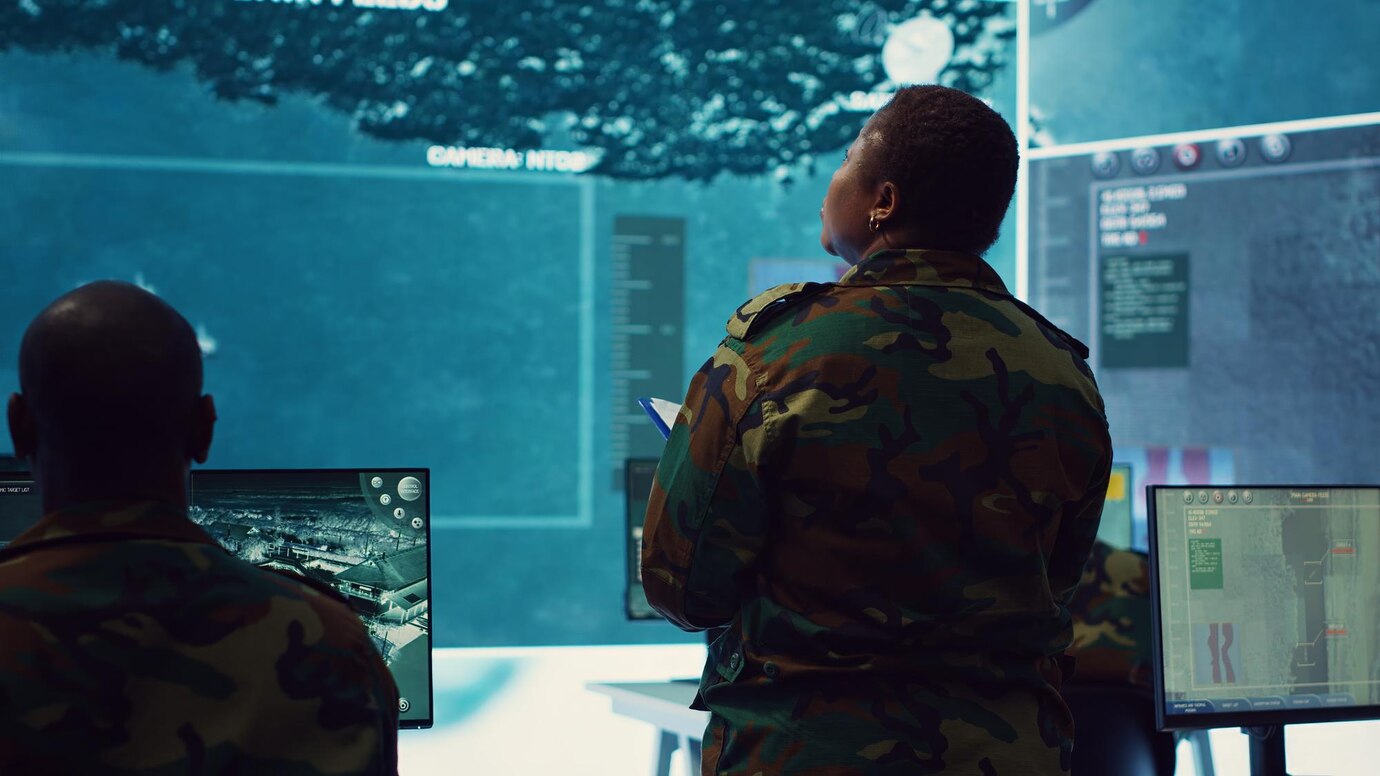
Source: Freepik
“You know, war starts with one level of technology and ends with a totally different level of technology,” Fedorov told the newspaper. Recognizing the lifesaving potential of technology in Ukraine’s struggle against a much larger Russian force, he stressed the importance of innovation in preserving Ukrainian soldiers’ lives. “We don’t have many people, and we value the lives of every soldier,” he added.
Revolutionizing Warfare to Protect Ukrainian Soldiers
Fedorov’s latest initiative involves creating an Army of Robots to undertake tasks that would typically put Ukrainian soldiers at risk. Automated machine guns equipped with artificial intelligence for precision aiming have already been deployed, and recent announcements highlight the production of robots capable of laying mines and detecting explosives.

Source: Freepik
“We want robots that can absorb as much of the enemy’s firepower as possible, so we can be flexible and avoid losing the lives of our soldiers,” Fedorov explained. He also envisions fleets of self-driving vehicles to transport weapons, deliver ammunition, and evacuate injured troops from the front lines.
Ukraine’s Cutting-Edge Air-Defense Sensors
According to The Sunday Telegraph, successful tests have been conducted on a new breed of air-defense sensors that utilize secretive Ukrainian technologies, distinct from the radar systems provided by NATO countries. These sensors are designed to identify and track Russian drones and missiles, enhancing Ukraine’s defense efforts.
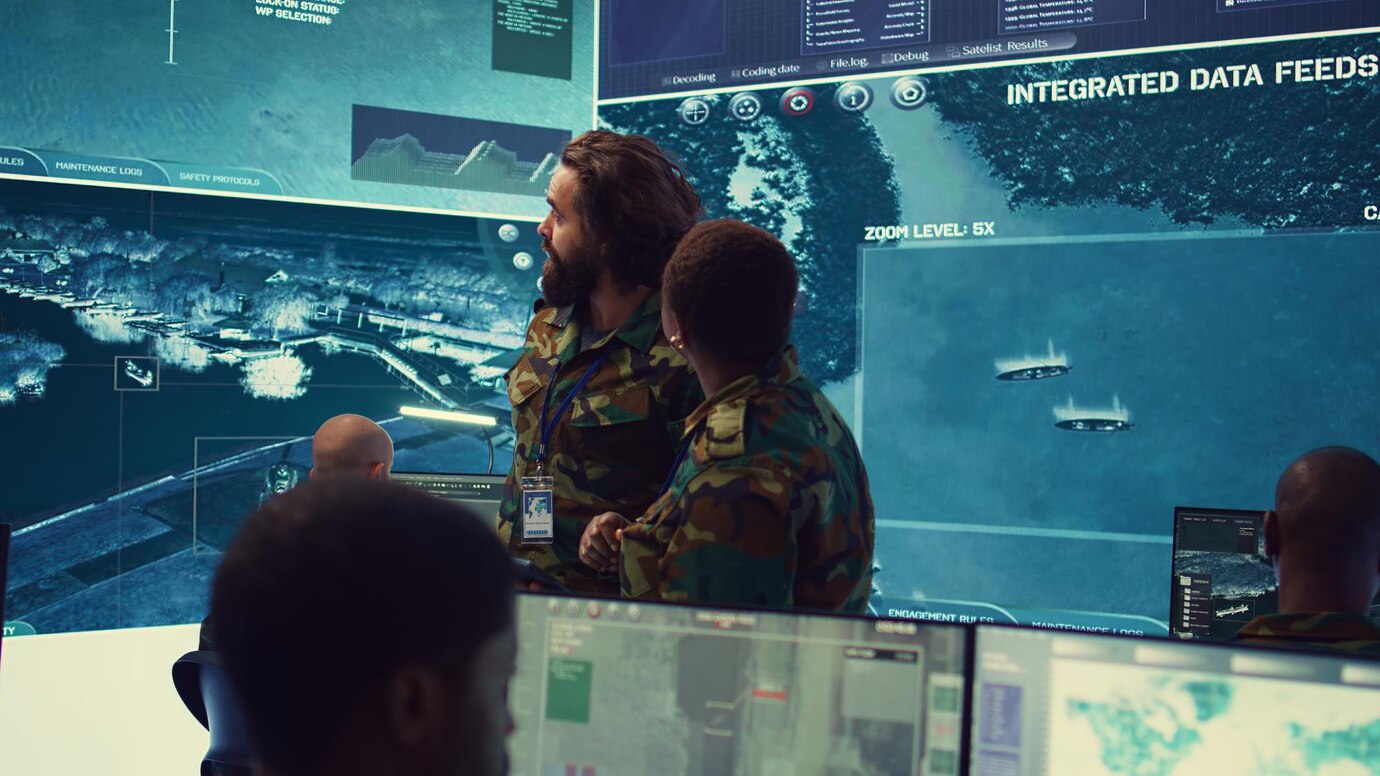
Source: DC Studio/Freepik
Ukraine is far from alone in pursuing a real-life version of Robocop. During summer training exercises with Cambodia’s military, China unveiled an army of robohounds armed with guns. Leading military powers like China, Russia, the USA, and the UK are racing to develop and deploy robotic war dogs armed with lethal capabilities, including sniper rifles and flamethrowers, according to The Daily Mail.
From Civilian Flamethrowers to Battlefield Game-Changers
In the United States, consumers can even purchase a flamethrower-equipped robot dog for personal use. The “Thermonator,” developed by Throwflame, releases a fierce stream of fire that can reach several meters, capable of igniting almost any target in its path. Sales of the Thermonator have recently been opened across most of the U.S., making this frightening technology available to the public.

Source: Freepik
The British Army has also begun trials with its own version of these robotic dogs. While the British variant hasn’t yet been shown carrying a weapon, the possibility of arming these machines remains open. In a video shared by China’s state broadcaster CCTV, similar robots are seen planning routes, approaching targets, and avoiding obstacles, with the capability to operate for up to four hours on the battlefield. General Collins, a senior British military official, has suggested that by 2030, the first contact with an enemy on the battlefield could be made by robotic systems, marking a significant shift in military strategy. Writing in the British Army Review, Collins compared these developments to scenes from the Hollywood blockbuster “Terminator,” where autonomous machines wage war against humanity.
The Rise of Autonomous Warfare
The fear that these machines could operate without mercy is no longer confined to fiction. Autonomous or semi-autonomous drones are already being deployed in conflicts to hunt down, target, and eliminate human adversaries. While most drones and unmanned vehicles currently require some level of human control, the technology is rapidly advancing, and a fully autonomous drone cannot be jammed.
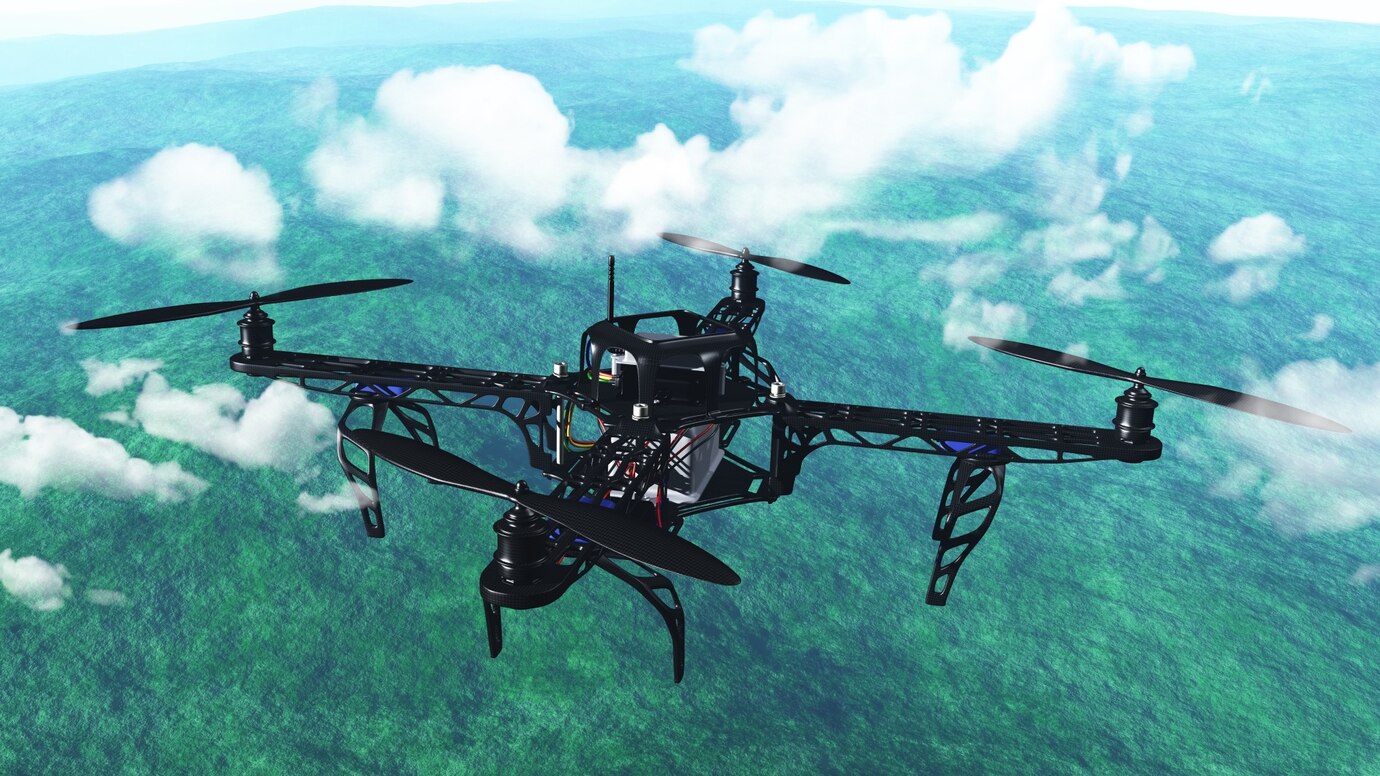
Source: kjpargeter/Freepik
Part of the drone war in Ukraine involves developing electronic warfare countermeasures to render drones and robots ineffective by blocking their connection to their operators. However, an AI-powered drone can be directed at a target and left to complete the mission independently.
Milestones in Autonomous Warfare
A 2020 United Nations report also noted that the Turkish-made Kargu-2 attack drone was used autonomously in combat during a battle in Libya, marking a chilling milestone in warfare. Israel has also advanced drone warfare, launching an AI-guided drone swarm in 2021 to attack Hamas militants. This technology allows multiple drones to operate as a single, integrated network controlled by artificial intelligence, representing a significant leap in military operations.

Source: Freepik
NATO has acknowledged that while autonomous drones and robots cannot truly think for themselves, they are programmed with a wide range of responses to various battlefield scenarios. According to a NATO report, the limiting factor is no longer the technology itself but the political will to deploy such systems, which would allow lethal machines to operate without direct human oversight.
Russia's Technological Response
Russian President Vladimir Putin has also taken notice. Kyiv continues to endure relentless attacks from Russian-operated Shahed-136 drones supplied by Iran. Russia has also reportedly deployed AI-enabled strike drones like the Kalashnikov ZALA and the Lancet, which have autonomous capabilities, including the ability to independently locate and destroy targets.

Source: fabrikasmif, Freepik
Russian engineers are increasingly turning to Unmanned Ground Vehicles (UGVs) to change the course of the war. These ground-based robots, capable of carrying weapons, explosives, or conducting reconnaissance, symbolize Russia’s technological advances on the battlefield. Combat footage circulating online has shown Moscow deploying remotely operated versions of old tanks packed with explosives, driven towards Ukrainian positions, according to The Daily Mail.
Russia's High-Tech Advances
In addition to these rudimentary tank bombs, Russia is advancing with high-tech, self-driving UGVs such as the Marker. This platform, equipped with AI and machine learning capabilities, has demonstrated the ability to navigate controlled environments without human operators, according to Samuel Bendett, a senior fellow at the Center for a New American Security.

Source: Rheinmetall
“The ultimate goal is to have these systems function autonomously in battle, working seamlessly with human operators, UAVs, and manned assets in a networked environment,” Bendett told The Daily Mail. “But we are far from that.”
Escalating Risks
The stakes in this technological arms race are high. Recent Russian drone strikes near the Khmelnytsky nuclear facility in western Ukraine have heightened concerns among Kyiv’s officials and civilians, who fear a repeat of last winter’s assault on the nation’s energy grid.
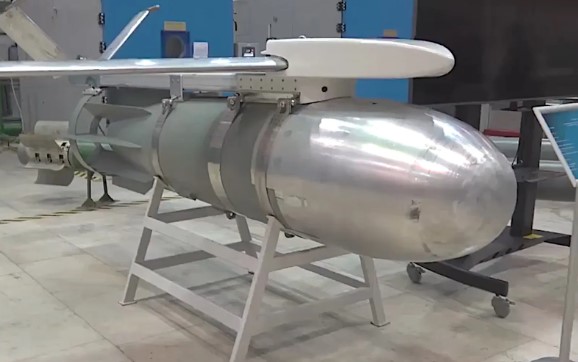
Source: Wikimedia
Meanwhile, as these new technologies are being developed, Russia has repurposed its Soviet-era gravity bombs, strapping wings on them and adding a rudimentary guidance system to create devastating FAB glide bombs. The advantage of this low-tech innovation lies in Russia’s vast stockpile of these bombs and Ukraine’s lack of defense against them, other than attempting to shoot down the jets that launch them.
Civilian Robotics Surge
The civilian sector isn’t far behind. In February, Russian daily Vedomosti reported a 55% increase in purchases of robotic dogs and a 41% increase in the acquisition of robot assistants in Russia in 2023. These purchases mainly involved low-cost consumer devices priced between RUB 2,000 and RUB 5,000 ($20-55), equipped with microphones, video cameras, and built-in voice assistants. Many of these robots are used for entertainment, such as interacting with children or pets, and for remote communication and monitoring, rather than for combat purposes.
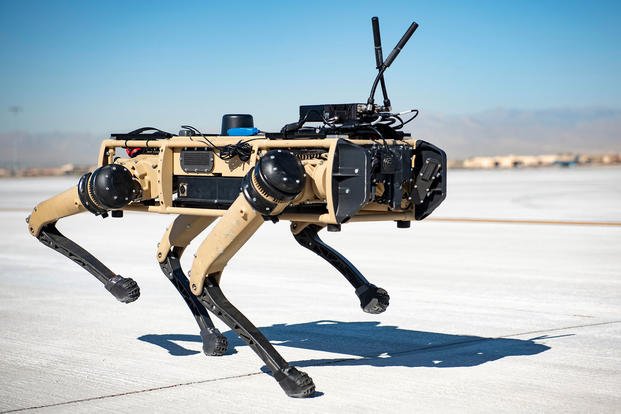
Source: Military.com
As the Russia-Ukraine war drags on, military and artificial intelligence experts predict an increasing reliance on drones capable of autonomously identifying, selecting, and attacking targets without human intervention.
